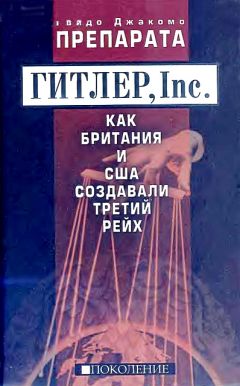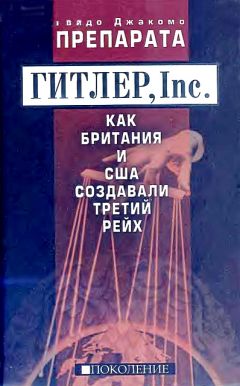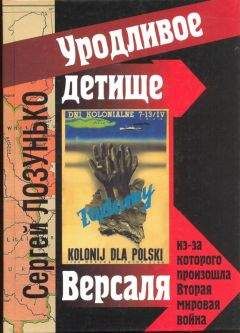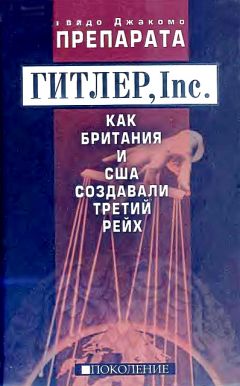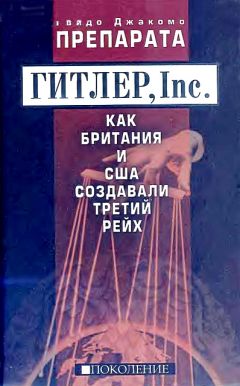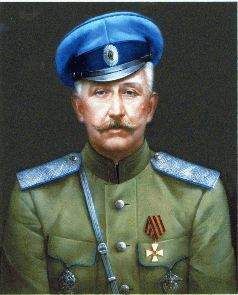154. Marcel Mauss, Ecrits politiques (Paris: Librairie Artheme Fayard, 1997
[1924]), p. 665.
155. Adolf Hitler, Hitler's Secret Conversations 1941-1944 (New York: Farrar,
Straus & Young, 1953), p. 54.
156. Holtfrerich, Inflation, p. 155.
157. Quigley, Tragedy, p. 312.
158. W. G. Krivitsky, In Stalin ys Secret Service (New York: Enigma Books, 2000
[1941]), pp. 28-38.
159. Konrad Heiden, Der Fuehrer. Hitler's Rise to Power (Boston: Houghton
Mifflin Company, 1944), pp. 130-1.
160. Von Salomon, The Answers, p. 242.
161. Цитируется по книге: Louis Kilzer, ChurchiWs Deception. The Dark Secret
that Destroyed Germany (New York: Simon 8c Schuster, 1994), p. 100.
162. Hitler, Mein Kampf, (Boston: Houghton Mifflin Company, 1971
[1925]), pp. 687.
163. Claus-Ekkehard Barsch, Die politische Religion des Nationalsozialismus
(Miinchen: Wilhelm Fink Verlag, 1998), pp. 63-70.
164. Ibid., p. 90.
165. Adolf Hitler, Mein Kampf, pp. 131-43; emphasis added.
166. David Irving, The War Path: Hitler's Germany, 1933-1939 (London:
Michael Joseph, 1978), p. 56.
167. Ian Kershaw, Hubris, p. 151.
168. Arthur Moeller van den Bruck, Luomo politico (Der politische Mensch)
(Roma: Settimo Sigillo, 1997 [1918]), p. 93.
169. Paul Harrison Silfen, The Volkisch Ideology & The Roots of Nazism. The
Early Writings of Artur Moeller van den Bruck (New York: Exposition Press, 1973), p. 11.
170. Ernst Hanfstaengl, Hitler: The Missing Years (New York: Arcade
Publishing, 1994 [1957]), p. 64.
171. Alfred Rosenberg, Der My thus des 20. Jahrhunderts. Eine Wertung der seel-
isch-geistigen Gestaltenkampfe unserer Zeit (Miinchen: Honeichen-Verlag, 1934), p. 640.
172. См., например: Detlev Rose, Die Thule-Gesellschaft. Legende, Mythos, Wir-
klichkeit (Tubingen: Grabert Verlag, 1994), pp. 176-7.
173. Karl Haushofer, Weltmeere und Weltmachte. (Berlin: Zeitgeschichte
Verlag, 1937), p. 284.
174. Woodruff D. Smith, The Ideological Origins of Nazi Imperialism (Oxford:
Oxford University Press, 1986), p. 223.
175. Hitler, MeinKampf p. 610.
176. Ibid. pp. 615-19.
177. Ibid., pp. 662, 663.
178. Ibid., pp. 660-2.
179. Ibid., pp. 664.
Часть 4
1. Louis-Ferdinand Celine, Voyage au bout de la nuit (Paris: Gallimard, 1952 [1932]), p. 26.
2. Erich Kastner, Larm im Spiegel (Berlin: Deutsche Verlag-Anstalt, 1929), pp. 70, 71.
3. Erich Kastner, Fabian: The Story of a Moralist (Evanston: Northwestern University Press, 1990 [1931]), p. 44.
4. Silvio Gesell, The Natural Economic Order (San Antonio: Free Economy Publishing Co., 1920), Part I.
5. Ibid., pp. 275-8.
6. Jacques Rueff, De Faube au crepuscule. Autobiographic de Fauteur. (Paris: Librairie Plon, 1977), p. 307.
7. Webster G. Tarpley, and Anton Chaitkin, George Bush. The Unauthorized Biography (Washington DC: Executive Intelligence Review, 1992), p. 31.
8. Francis Williams, A Pattern of Rulers (London: Longman, 1965), p. 201.
9. Ibid., p. 199.
10. Ibid., p. 203.
11. Henry Clay, Lord Norman (London: Macmillan 8c Co., 1957), p. 475.
12. Williams, Pattern, p. 203.
13. Andrew Boyle, Montagu Norman (London: Cassell, 1967), p. 67.
14. Ibid., p. 85.
15. Williams, Pattern, p. 204.
16. Ibid.
17. Percy Ainold, The Bankers of London (London: Hogarth Press, 1938), pp. 9, 16-17.
18. Ibid., p. 11.
19. Boyle, Norman, pp. 129-30.
20. Ibid., p. 133.
21. Ibid., p. 131.
22. Carroll Quigley, Tragedy and Hope. A History of the World in Our Time (New
York: Macmillan Company, 1966), p. 326.
23. Boyle, Norman, pp. 133-4, 137-8; emphasis added.
24. William Adams Brown Jr., England and the New Gold Standard.
1919-1926 (New Haven: Yale University Press, 1929), p. 55.
25. Boyle, Norman, p. 217.
26. Ibid. p. 185.
27. G. Balachandran, John Bullion's Empire: Britain's Gold Problem and
India Between the Wars (Richmond, Surrey: Curzon Press, 1996), p. 64.
28. Maxwell S. Stewart, 'Silver-Its International Aspects', Foreign Policy Reports, Vol. VII, No. 13 (1931), p. 242.
29. Adams Brown, England, p. 84.
30. Balachandran, John Bullion s Empire, p. 91.
31. Ibid., p. 89.
32. Ibid., pp. 98, 100.
33. Ibid., p. 202.
34. Boyle, Norman, p. 138.
35. Stanley Lebergott, The Americans. An Economic Record (New York:
Norton 8c Co., 1984), p. 396.
36. Clay, Lord Norman, p. 129.
37. Boyle, Norman, p. 68.
38. Clay, Lord Norman, p. 135.
39. Ibid., p. 132.
40. Barry Eichengreen, Golden Fetters. The Gold Standard and the Great
Depression, 1919-1939 (New York: Oxford University Press, 1992). p. 118.
41. Charles O. Hardy, Is There Enough Gold? (Washington DC: Brookings
Institution, 1936), pp. 103, 153.
42. Ibid., p. 154.
43. Marcello De Cecco, Moneta e impero. II sistema jinanziario intern azion ale
dal 1890 al 1914 (Torino: Piccola biblioteca Einuadi, 1979), p. 157.
44. Balachandran,yo/*ft Bullion's Empire, p. 92.
45. William Adams Brown Jr., The International Gold Standard Reinterpreted,
1914-1934 (New York: National Bureau of Economic Research, Inc., 1940), p. 295.
46. Hardy, Enough Gold?, p. 93.
47. Adams Brown, Gold Standard, p. 294.
48. Ibid., p. 290.
49. Ibid., p. 301.
50. Eichengreen, Golden Fetters, p. 164.
51. Boyle, Norman, pp. 147-8.
52. Melchior Palyi, The Twilight of Gold 1914-1936. Myths and Realities
(Chicago: Henry Regnery Company, 1972), p. 144.
53. Hjalmar Schacht, My First Seventy-six Years. The Autobiography of Hjalmar
Schacht (London: Allen Wingate, 1955), p. 131.
54. Ibid.
55. Anton Chaitkin, Treason in America, from Aaron Bun to Averell Hani man.
(New York: New Benjamin Franklin House, 1985), p. 545.
56. Ibid., p. 546; emphasis added.
57. Schacht, Autobiography, p. 188.
58. Clay, Lord Norman, p. 197.
59. Bank of England, G1/44-419, p. 123, quote from an article of Carl von
Ossietzky on the Weltbuhne, November 27, 1928.
60. Boyle, Norman, p. 169.
61. Ibid., p. 171.
62. Schacht, Autobiography, p. 194.
63. Boyle, Norman, p. 171.
64. Charles L. Mowat, Britain Between the Wars, 1918-1940 (Chicago:
University of Chicago Press, 1955), p. 373.
65. Boyle, Norman, p. 159.
66. Geminello Alvi, DelVestremo occidente. II secolo americano in Europa. Storie
economiche (Firenze: Marco Nardi Editore, 1993), p. 195.
67. Ibid., p. 197.
68. Paul R. Leach, That Man Dawes (Chicago: Reilly 8c Lee Co., 1930),
pp. 206-7.
69. Ibid., p. 194.
70. Quigley, Tragedy, p. 308.
71. Alvi Occidente, pp. 197-8.
72. Ibid., p. 199.
73. Maurice Callot, Le mark allemand depuis 1924 (Paris: Librairie Arthur
Rousseau, 1934), p. 20.
74. Boyle, Norman, p. 197.
75. Alvi, Occidente, p. 208.
76. Demetre Delivanis, La politique des banques allemandes, en matiere
de credit a7 court terme (Paris: Librairie du Recueil Sirey, 1934), p. 53.
77. Alvi, Occidente, p. 198.
78. Louis T. McFadden, Collected Speeches of Congressman Louis T. McFadden,
as Compiled from the Congressional Record (Hawthorne, CA: Omni Publications, 1970), p. 204.
79. Quigley, Tragedy, p. 308.
80. Theo Balderston, The Origins and Causes of the German Economic Crisis,
November 1923 to May 1932 (Berlin: Haude & Spener, 1993), p. 134.
81. Garl T. Schmidt, German Business Cycles, 1924-1933 (New York:
National Bureau of Economic Research, 1934), p. 71.
82. Balderston, Origins and Causes, p. 140.
83. Garet Garrett, The Rescue of Germany & As Noble Lenders (New York: The
Chemical Foundation, 1931), p. 3.
84. McFadden, Collected Speeches, p. 57.
85. Derek Aldcroft, From Versailles to Wall Street, 1919-1929 (New York:
Penguin Books, 1978), p. 90, and Quigley, Tragedy, p. 309.
86. Paul Oesterfeld, La leggende delVoro (Roma: Casa Editrice Mediterranea,
1943), pp. 171, 182-3.
87. Garrett, Rescue of Germany, pp. 36-40.
88. Arthur Rosenberg, Storia delta repubblica tedesca (Deutsche Republik)
(Roma: Edizioni Leonardo, 1945 [1934]), p. 193.
89. Kastner, Fabian, p. 33.
90. Rosenberg, Storia delta repubblica tedesca, pp. 198, 199, 210.
91. Delivanis, Politique des banques, p. 52.
92. Joseph Borkin, The Crime and Punishment of I. G. Farben (New York: The
Free Press, 1978), p. 7.
93. Richard Sasuly, /. G. Farben (New York: Boni & Gear, 1947), p. 40.
94. Borkin, Crime and Punishment, p. 21.
95. Ibid., p. 1.
96. Ibid., p. 28.
97. Anthony C. Sutton, Wall Street and the Rise of Hitler (Sudbury, Suffolk:
Bloomfield Books, 1976), p. 33.
98. William Manchester, The Arms of Krupp, 1857-1968 (Boston: Little,
Brown and Company, 1968), pp. 348-50.
99. Borkin, Crime and Punishment, p. 45.
100. Ibid., p. 54.
101. Sasuly, /. G. Farben, p. 148.
102. Sutton, Rise of Hitler, p. 35.
103. Sasuly, /. G. Farben, p. 149.
104. Sutton, Rise of Hitler, pp. 35, 36.
105. Ibid., p. 22; emphasis added.
106. Andrej Gromyko, Lespansione internazionale del capitate, storia e attualitd
(Roma: Editori Riuniti, 1985 [1982]), p. 139.
107. Sutton, Rise of Hitler, pp. 51-66.
108. Palyi, Twilight of Gold, p. 155.
109. Quigley, Tragedy, p. 308.
110. Garrett, Rescue of Germany, p. 29.
111. Stephen V. O. Clarke, Central Bank Cooperation, 1924-1931 (New York:
Federal Reserve Bank of New York, 1967), p. 85.
112. Adams Brown, England, p. 206.
113. Ibid., pp. 213-14, 220-1, and Adams Brown, Gold Standard, 1940,
p. 368.
114. В результате особых положений «Золотого акта» 1925 года, касающихся конвертируемости, доля золота в мировом денежном обращении равнялась к 1928 году до 8 процентов, в то время как
в 1913 году эта доля составляла 45 процентов, при том что были
закрыты китайский и индийский золотые запасы (Edwin Е Gay, «The Gold РгоЫет», Foreign affairs, Vol. 9, January 1931, p. 198).
115. Quigley, Tragedy, p. 322.
116. Rue ft, De Vaube an crepuscule, p. 313.
117. Hardy, Enough Gold?, p. 101; emphasis added.
118. Emile Moreau, Souvenirs dun Gouverneur de la Banque de France, histoire
de la stabilisation du franc (1926-1928). Paris: Librairie de Medicis, 1954), p. 48.
119. Boyle, Norman, p. 194.
120. Quigely, Tragedy, p. 326.
121. Felix Somary, Die Ursache derKrise (Tubingen: }. С. B. Mohr, 1932),
p. 11.
122. Ibid., pp. 4, 11-13.
123. Moreau, Souvenirs dun Gouverneur, p. 40. «Норман — очень жесткий бизнесмен, и очень умный».
124. Ibid., pp. 48-9.
125. Alfred Sauvy, Histoire e'conomique de la France entre les deux gueires (Paris:
Fayard, 1965), p. 158.
126. McFadden, Collected Speeches, p. 158.
127. Moreau, Souvenirs dun Gouverneur, p. 308.
128. Boyle, Norman, p. 228.
129. Clay, Lord Norman, p. 486.
130. Boyle, Norman, p. 135.
131. Ibid., p. 228.
132. Moreau, Souvenirs d'un Gouverneur, pp. 329-31. f
133. Ibid., p. 333.
134. Aldcroft, From Versailles to Wall Street, pp. 165-6.
135. Clay, Lord Norman, p. 484.
136. Clarke, Central Bank Cooperation, p. 124.
137. George B. Robinson, Monetary Mischief (New York: Columbia
University Press, 1935), p. 30.
138. Hardy, Enough Gold'?, p. 155.
139. Adams Brown, Gold Standard, p. 487.
140. Clarke, Central Bank Cooperation, pp. 130, 134.
141. Moreau, Souvenirs dun Gouverneur, p. 383.
142. Diane Kunz, The Battle for Britain's Gold Standard in 1931 (London:
Croom Helm, 1987), p. 18.
143. Bank of England, Gl/453, Norman to Schacht.. 11 December 1928.
144. Clarke, Central Bank Cooperation, p. 157.
145. Robinson, Monetary Mischief, p. 43.
146. J. R. Levien, Anatomy of a Crash - 1929 (New York: Traders Press,
1966), p. 45.
147. Alexander Dana Noyes, The Market Place. Reminiscences of a Financial
Editor (Boston: Little, Brown 8c Company, 1938), pp. 329, 330.
148. Francis W. Hirst, Wall Street and Lombard Street. The Stock Exchange Slump
of 1929 and the Trade Depression of 1930 (New York: Macmillan Company, 1931), pp. 6, 9.
149. Robinson, Monetary Mischief, p. 37.
150. Frank Simonds, Can Europe Keep the Peace? (New York: Blue Ribbon
Books, Inc., 1934), p. 307.
151. Lago Gil Aguado, 'The Creditanstalt Crisis of 1931 and the Failure of
the Austro-German Customs Union Project', HistoricalJournal, Vol. 44, No. 1 (2001), p. 201.
152. Lionel Robbins, The Great Depression (New York: Macmillan Company,
1934), p. 28, and Rueff, De Faube au crepuscule, p. 301.
153. R.J. Truptil, British Banks and the London Money Market (London:
Jonathan Cape, 1936), p. 289.
154. Walter A. Morton, British Finance, 1930-1940 (New York: Arno Press,
1978), pp. 32-4.
155. Clay, Lord Norman, p. 396.
156. Boyle, Nomian, p. 263.
♦
157. Clarke, Central Bank Cooperation, p. 203.
158. Kunz, The Battle, p. 84.
159. McFadden, Collected Speeches, p. 229.
160. Kunz, The Battle, p. 91.
161. Ibid., pp. 122, 130.
162. Paul Einzig, The liagedy of the Pound (London: Kegan, Paul, Trench,
Trubner 8c Co., Ltd., 1932), pp. 90-1.
163. Adams Brown, Gold Standard, p. 1015.
164. Clarke, Central Bank Cooperation, p. 214.
165. Ibid.
166. Palyi, Tunlight of Gold, p. 155.
167. D. E. Moggridge, British Monetary Policy, 1924-1931. The Norman conquest of $4.86 (Cambridge: Cambridge University Press, 1972),
168. Morton, British Finance, p. 45; emphasis added.
169. Williams, Pattern, p. 210.
170. Morton, British Finance, p. 46.
171. Boyle, Norman, p. 275.
